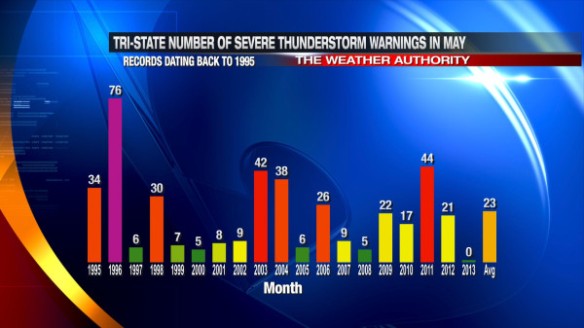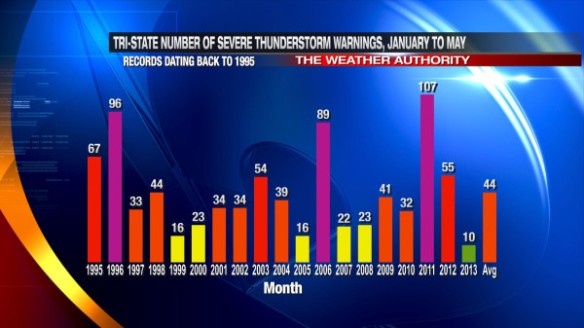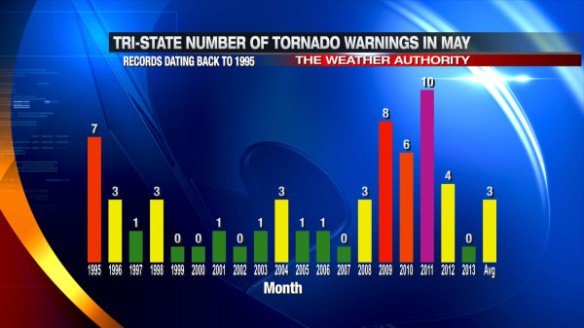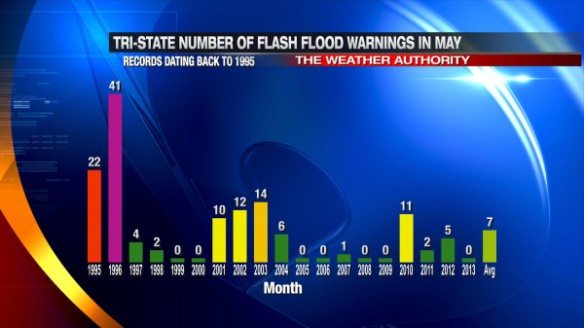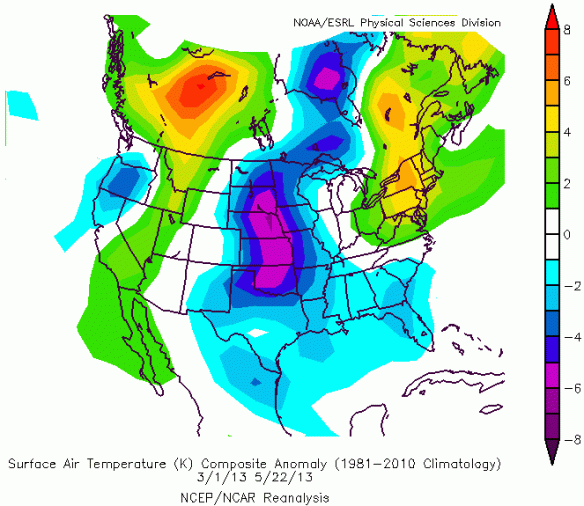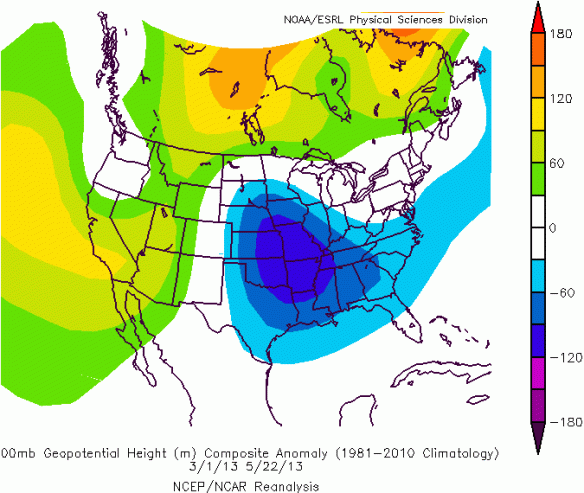May is the second busiest month of the year for severe weather warnings. After a record number of tornadoes last year, this year – especially this month – has been anything but stormy.
There have been no Severe Thunderstorm Warnings issued in the Tri-State so far this month. Compare that to the average of 23 warnings each May and the 76 warnings issued in the Tri-State in May 1996:
From January 1st to May 31st, an average of 44 Severe Thunderstorm Warnings are issued in southwestern Ohio, northern Kentucky, and southeastern Indiana. So far this year, only 10 Severe Thunderstorm Warnings have been issued in the Tri-State:
If no Severe Thunderstorm Warnings are issued for the rest of the month, the year-to-date number of Severe Thunderstorm Warnings will be at a record minimum (at least since the National Weather Service in Wilmington started issuing warnings for our area).
There have also been no Tornado Warnings issued in the Tri-State so far in May 2013; on average three Tornado Warnings are issued each May. Here’s the breakdown of how many Tornado Warnings have been issued each May since 1995:
In addition to no Tornado and Severe Thunderstorm Warnings, no Flash Flood Warnings have been issued in the Tri-State. On average, 7 Flash Flood Warnings are issued in the Tri-State every May. Here’s how many year warnings have been issued each year during the month of May since 1995:
Why have been there been so few Severe Thunderstorm, Tornado, and Flash Flood Warnings so far this year? You can’t place the blame on a single ingredient, but the lack of low-level moisture and cooler than average air for most of the spring are the biggest reasons.
Data from NOAA’s ESRL shows colder than average temperatures (blue, purple) over most of the Midwest, Mississippi Valley, and Plains since March 1st:
Warm air is a key ingredient for getting severe storms. While you need warm air near the ground to get strong storms, you also need cold air aloft. Data from NOAA’s ESRL shows that there has been plenty of that this season (in blue):
However, most of this cold air has been associated with upper-level lows and dips in the jet stream. Severe weather is not common when you have cold air aloft and little support at the surface.
NOAA’s ESRL data suggests there has also been a lack of instability this spring. One way to measure instability is by looking at a plot of Lifted Index:
Higher Lifted Index values mean less instability and lower Lifted Index values mean more instability. Notice relatively unstable air (blue, purple colors) over the Ohio and Tennessee Valley compared to our northwest. In the last couple of months, the best instability has been to our southwest, south, and east. As a result, the strongest storms in this country so far this spring have been focused there.
A quiet start to the peak severe weather season doesn’t necessarily mean that we’ll see a quiet end of severe weather season. Be prepared for what could be a busy summer of severe weather!

